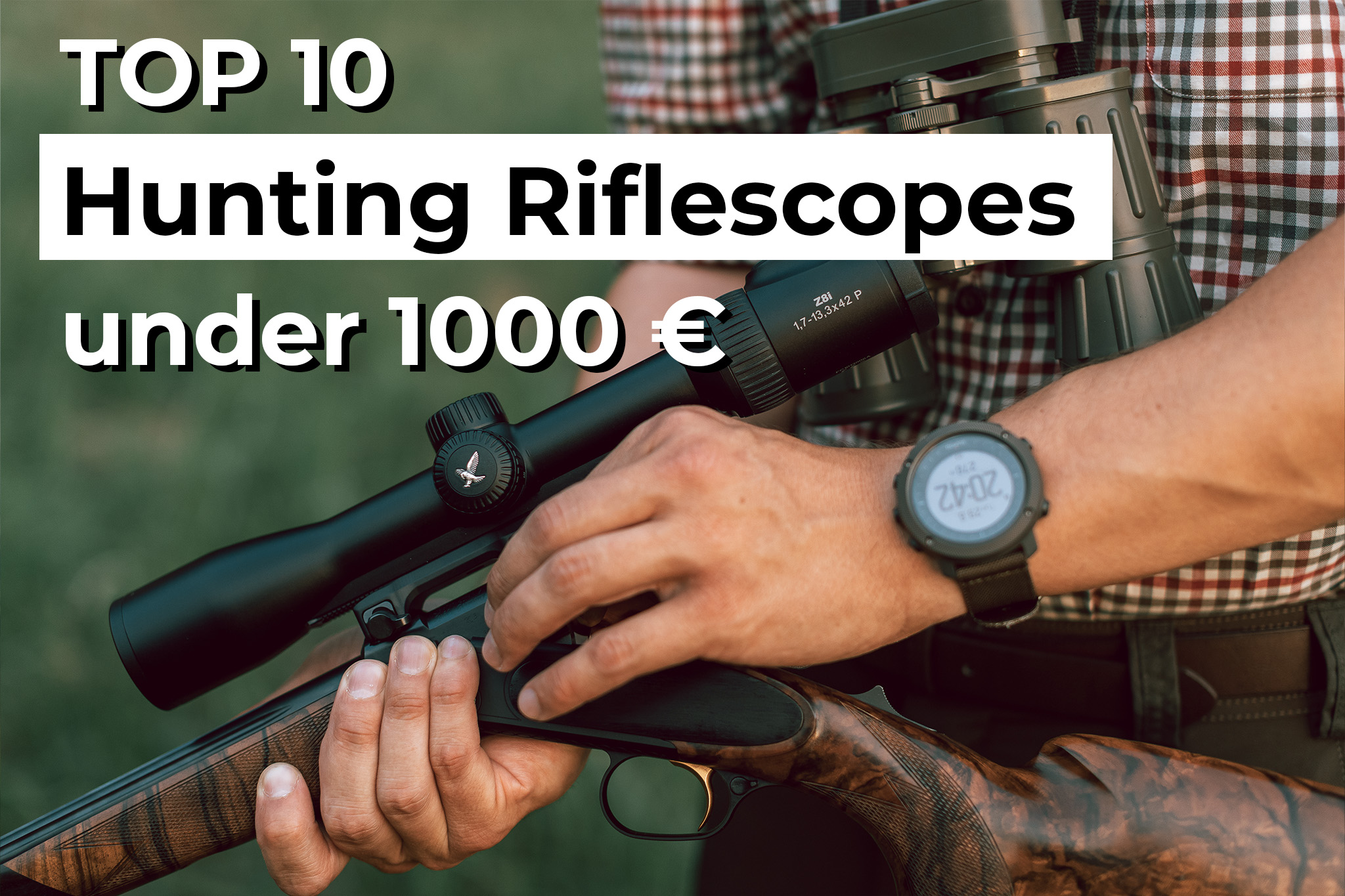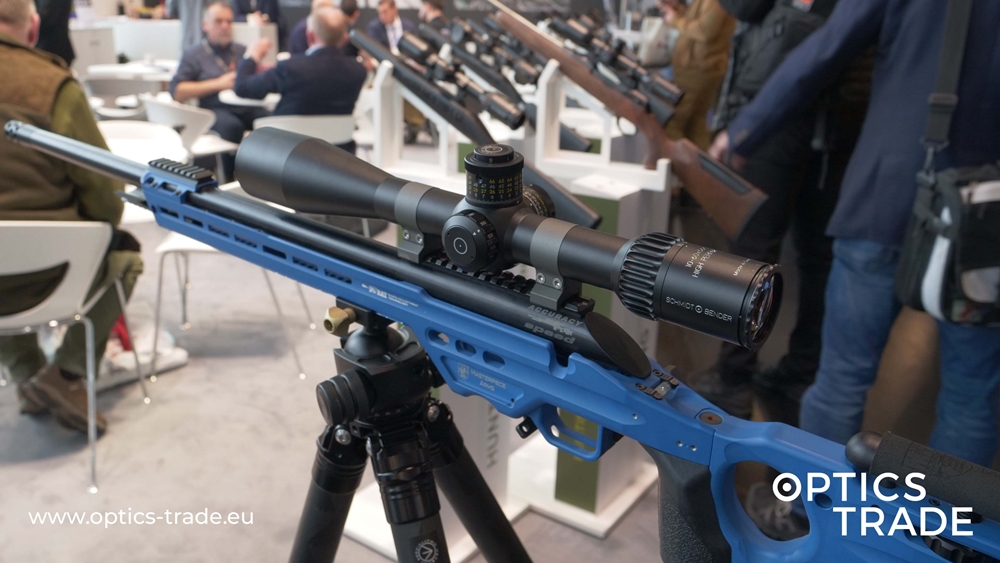Hello and welcome to another episode of Optics Trade Debates. Today’s video will focus on MIL/MIL tactical riflescopes. There are many models currently available on the market so let’s just dive in.
A MIL/MIL scope has tactical (exposed) turrets.
More importantly, its reticle is in the first focal plane (the reticle does not have a fixed size, it enlarges or shrinks with the change of magnification) and features holdover lines in MILs. In other words, the reticle subtensions are in MILs. Between two lines there is 5, 1 or 0.5 MILs and so on. That’s what the first half of the MIL/MIL name designation stands for.
The second part of the MIL/MIL name is there because the turret clicks are also measured in MILs.
The reticle subtensions and turret clicks are matched. That means the user always has the same number of clicks between any number of lines. With that, 1 MIL of reticle subtensions between one line and another means that there’s 10 clicks in-between. When you hit the target 1 MIL too low, just move the turret for 10 clicks and the next shot will be in the centre of the target.
The shooter can use the reticle as a guide to counting the number of MILs the shot was off-target as it directly corresponds to the amount of adjustment that is required to hit the target with the follow-up shot. The reticle subtensions and turret clicks are matched. In the first focal plane, they will match at any magnification.
As we said, this is a subcategory of tactical riflescopes. Tactical riflescopes are all riflescopes than feature tactical (exposed) turrets, that’s the one basic criterion. But MIL/MIL riflescopes are truly tactical devices as any other riflescope’s performance in the field will fail when compared MIL/MIL ones.
This is why MIL/MIL riflescopes are used in all sorts of tactical applications like tactical long-range shooting and CQB (Close Quarter Battle) shooting.
The reticles of MIL/MIL scopes can be used for distance estimation and holdover calculation (a.i bullet drop compensation).
These riflescopes are on offer in various configurations. You can find wide-angle scopes with small lens diametres (24- and 30-millimetres are very common) and of low magnification powers (1-4x or 1-8x, for instance).
Then there’s middle-range riflescopes, often with 44- to 50-millimetre objective lens. The Vortex Razor HD Gen II 3-18×50 and Viper PST Gen II 3-15×44 FFP are great examples of magnification ranges to expect in such MIL/MIL riflescopes.
The biggest MIL/MIL modes have 56-millimetre objective lens and higher magnifications that go all the way to 30x (but 16x or 24x are just as popular).
But these configurations are not crucial information. MIL/MIL riflescopes are defined by the reticle position and the matching of turret clicks with reticle subtensions.
However, it is true that MIL/MIL scopes are a rarity in the wide-angle category of riflescopes. The same way as MIL/MIL scopes with a magnification higher than 30x are hard to find. For tactical use, neither of the two are needed. Even 20x magnification is more than enough for such an application.
We already mentioned that the reticles of MIL/MIL tactical riflescopes are in the 1st focal plane. Consequently, with extreme zooms (as in the case of the Schmidt & Bender model 5-45×56 PM II High Power) the reticle becomes incredibly thin on lower magnification powers and quite thick on high magnifications. Due to this fact, 4-6x zoom is the most appropriate and the 3-24x magnification range the most usable.
Physical appearance-wise, these scopes are robust and heavy. The standard tube diametre is 34mm but bigger tubes like 40-millimetre ones are also on offer. These scopes are commonly used for long-range shooting and require big elevation ranges (a big number of clicks, hence the need for a bigger central tube diametre).
Normally, slightly cheaper scopes feature a 30-millimetre main tube and with that, some of the elevation range is lost. In short, the majority of MIL/MIL scopes is quite bulky.
In the past, Mil-Dot reticle was the most popular one. That means every MIL was represented by a dot in the reticle design. We often say that modern reticles of MIL/MIL scopes resemble a Christmas tree due to the numerous holding points left and right for windage and drop correction. They also feature very fine holdover lines.
Some reticles even feature a scale (S&B’s MSR reticle is a good example) to make distance estimations easier. Scales in such riflescopes even have subtensions divided by 0.1 MIL (= 1 click). The level of precision here is obviously remarkable.
For the MIL/MIL scopes with a really large elevation range, it’s important to have a turn indicator. A turn indicator is a feature of a multi-turn or double turn turret. It indicates in which revolution the turret is in and the user can know how many clicks he has dialled in. The most common multi-turn turret indicator is just a diagram of lines underneath the turret but some indicators are mechanical and much more elaborate.
Last but not least, let’s talk prices. MIL/MIL scopes offer incredible precision, illuminated tactical reticles, locking function on turrets. These products often come accompanied with magnetic sidewheels, belts and everything else you can imagine inside the package.
The bottom line is, these riflescopes are very expensive.
As the market expands, new and more affordable options are available. The reality is that these scopes are used at unknown distances (you have to determine the distance with the help of the reticle) and in situations where only one shot or two count before the shooting range and the target change again. They’re not meant to make a one-centimetre group on 500 metres like F-Class scopes, for example. MIL/MIL scopes give you the highest probability of the first hit on-target possible and this costs money.
For customers that wish to own a MIL/MIL riflescope but don’t want to part with 2,000 EUR, products like Vortex Viper PST gen II 2-10×32 FFP are a great choice and they basically provide everything you need – smooth turret clicks with zero-stop function and a decent optical performance.
In the future, we expect to see MIL/MIL riflescopes for 600 EUR and less but the lower price is unlikely to come without compromises in precision and optical performance. Here, it’s important to note that in our experience, users who bought a MIL/MIL scope for cca. 700 EUR, tend to upgrade to a premium product in a couple of years.
That finally brings us to the end of today’s discussion. Thank you for your attention. Please like and share this video if you found it informative. As always, you can leave any remaining questions in the comment section below or send us an email. Subscribe to our YouTube channel for more content. See you next time!
Products mentioned:




